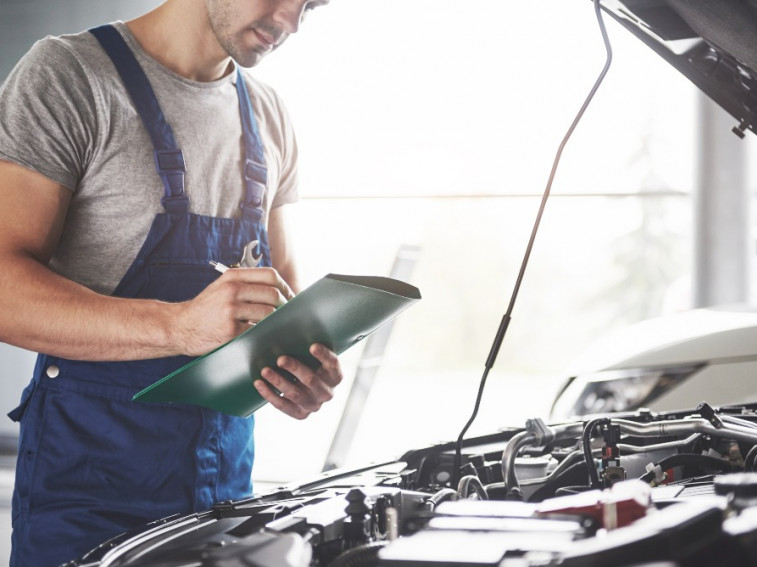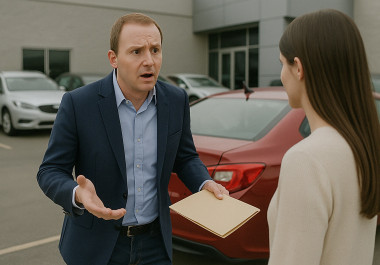Whether you’re a private driver or a professional mechanic (both frequent customers of ours here at RAW2K), it’s always helpful to know what an MOT test involves. If you’re planning on driving the car yourself, it helps to know what to check for so you know whether the car is suitable for your purposes (i.e., safe and road legal). On the other hand, if you’re planning on ‘flipping’ the car for a quick profit, you’ll need to know what’s required to get it in a serviceable - and sellable - condition! Now the thing with an MOT is that it doesn’t cover the engine, clutch or gearbox - but it does cover just about everything else. Here’s a quick breakdown of what it involves.
Safety
Wheels and tyres
It’s not hard to see why these are so highly prioritised by MOT examiners - your wheels and tyres are key to remaining safe while out on the road. That means that all the wheels must be securely attached to your car, and not missing any bolts. The wheel bearings will also be checked thoroughly, to ensure that the wheels remain in motion without any unnecessary or unpredictable friction. As for tyres, the MOT test is very strict that they must at a minimum tread depth of 1.6mm - anything less than that is illegal, as you could potentially be risking a blowout at high speeds. Tyres will also be examined for any cuts or bulges, and that they’re all of a uniform size over the entire vehicle.
Brakes, seats and seatbelts
One of the second most safety critical parts, brakes are subject to equally thorough examinations. The pedal rubber can’t be unduly worn, for example, and the discs, pads and callipers are all subject to detailed checks. Brakes will also need to be perfectly balanced, to ensure that the car doesn’t pull to one side when the brakes are applied.

The brake servo and master cylinder will similarly be inspected, while the handbrake and parking brake will both be tested on steep inclines, to ensure they’re sufficient to prevent the car from rolling down one. Finally, if the car has been fitted with anti-lock braking, the ABS light must be working when they’re applied.
And unless your car was built before 1965, seatbelts must all be present and in good condition. That means they must be securely fixed, and that inertia-reeled belts are capable of retracting properly in emergency situations.
Structure
Bodywork, doors and openings
The car doesn’t have to be flawlessly intact for it to pass its MOT, but it does have to meet minimum standards. Small dents might be OK, but there can’t be any sharp edges or jagged pieces protruding from the car, as they could pose a physical threat to passers-by (or the driver themselves). Rust can also be a factor in MOT failures, as it can impact the effectiveness of safety-critical parts like the steering or brakes. Since rust can spread surprisingly quickly, if it’s found within 30cm of safety critical parts it can result in an automatic fail.
Doors, meanwhile, need to be capable of being closed from both the inside and outside. All openings such as the bonnet and tailgate must also be able to open smoothly and close securely, so that they don’t cause a danger while driving.
Exhaust and emissions
Presuming the car isn’t electric, its emissions will be tested with specialised equipment that’s attached to the exhaust. The acceptable legal limit depends on the age of the car in question, as newer vehicles are held to much stricter standards than older ones. Any smoke emanating from the tailpipe can result in an automatic fail, as can excessive noise. (It’s one of the many reasons that petrolheads should always exercise caution in modding their vehicles.) The exhaust system and fuel filler cap are also checked to ensure that they’re properly affixed.
Steering and tow bar
Any excessive ‘play’ in the steering wheel can be enough to result in an accident, as we recently covered in our post about vehicle suspension. So, over the course of the MOT, the steering wheel and column will both be checked to ensure that this isn’t the case. The steering bearings are inspected, along with all bolts, clamps, gaiters and universal joints. The engine will also be started to test the power steering - it’s technically possible to drive a car without power steering, but it involves a much greater degree of physical effort, and is inadvisable unless it’s absolutely necessary. Finally, the tow bar will also be examined to ensure that it’s capable of bearing the weight it’s rated for.
Visibility and awareness
Windows and mirrors
You don’t have to be a qualified MOT inspector to know that drivers must be able to see out of their windows properly. Not all chips or cracks mean an automatic fail, but if they’re within the area swept by the windscreen wipers, they must measure under 10mm across. Anything else poses a clear and present threat to safety. If they’re outside the area swept by windscreen wipers, they can be up to 40mm, but that’s still obviously far from ideal, as even a small crack can risk the windscreen unpredictably shattering.
The wipers also have to operate correctly, and the rear view mirror must be secure in its bracket, free from any damage that might impair the driver’s vision or awareness.
Lights and horn
Again, these ones aren’t exactly rocket science. All lights have to be clean, functioning, and bright enough to be visible. This includes headlights, taillights, indicators, hazard lights, side lights, brake lights and rear fog lights. The alignment will also be checked to ensure that oncoming traffic isn’t dazzled. If the car has been built after 1980, it must be fitted with red rear deflectors.

Similarly, the horn must be functioning, and loud enough to alert other drivers. By law, it can’t be a musical or novelty horn, such as a ‘Dixie horn’ made famous by the Dukes of Hazzard.
Finally, the chassis number, otherwise known as the VIN (vehicle identification number) must be visible and legible. It’s generally found at the base of the windscreen, or a stamped metal panel under the bonnet.
If you’re planning on buying a car from our online car auctions to ‘flip’ (repair and sell on for a profit), it’s worth knowing what you’ll need to check in order to ensure it’s road legal. If you’re a driver, meanwhile, if you’ve got an MOT test coming up it can help to check on some of these components yourself occasionally, as getting them fixed in good time can help you avoid an inconvenient MOT fail.
Whatever the reason you’re browsing our salvage car auctions, you’re sure to have plenty of choice - we’ve got vehicles from the likes of Volkswagen, Seat and Ford, as well as a raft of other leading manufacturers. Why not take a look around, and see what you can find?




